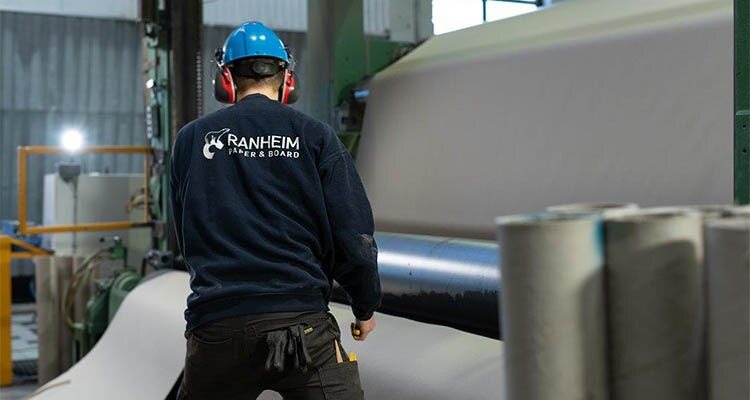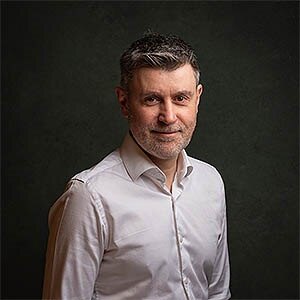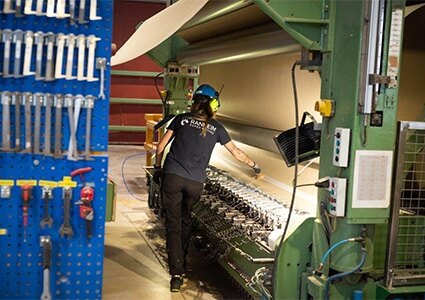
For a 140-year-old business, Ranheim Paper & Board is doing well to balance traditional quality with industry innovation
Ranheim Paper & Board (Ranheim) prides itself on being a global paper mill leader, owing its success to a long and layered history. Established as the Ranheim Cellulose factory in 1884, the company was powered by the Vikelva River and well connected through a newly laid railroad that facilitated efficient transportation. In 1907, facing trials and transformations in ownership, Ranheim Papirfabrik emerged, earning the distinction of being the northernmost paper mill, located near Trondheim, Norway.
In 1929, the installation of three large paper machines marked a further milestone, propelling the company to the forefront of paper production. The company’s resilience was echoed in 1939 with strategic investments in machinery for diversified paper products. As the post-war era ushered in prosperity, Ranheim seized this opportunity. The 1970s marked the zenith of activities, with employee numbers reaching around 800. The introduction of corrugated and solid board production lines broadened the company’s portfolio and offered innovative packaging solutions.

When the Peterson Group subsequently assumed a pivotal role in ownership, there was also a shift towards 100-percent recycled cardboard materials, which laid the foundation for Ranheim’s entry into the circular economy. The decade also witnessed the company’s 100th anniversary.
Amidst restructuring in the 1990s, Ranheim navigated challenges by exploring unique product lines including the introduction of a niche paper quality for laminates. However, the decade was also filled with setbacks. In 2012, the Peterson Group faced bankruptcy, forcing new owners to step in, who then brought Ranheim Paper & Board back to life.
In 2019, the Austrian industrial group, Fundermax GmbH, recognized potential within the laminate paper segment. The acquisition of Ranheim on January 1st marked a new chapter and positioned the company as a recycling specialist with a focus on laminates and fish packaging segments.
Today, Ranheim is a formidable force, as we hear from Head of Supply Chain, Ørjan Knutzen. “The factory began as an industrial cornerstone for the local community here. If you go back, before the factory was built, there was nothing in the area, except for farmland. So, it’s basically the determination and the involvement from the community that has built us into the operation we are now. This means that the values from the people who work with us have created a very special atmosphere as a result.” He adds that Ranheim is the only manufacturer in Europe with integrated paper and solid board production at one location and is also one of the very few manufacturers to boast 100 percent recycled fiber-based production.
For supply chains across the globe, the last two years have been anything but easy. While juggling financial stability, companies have had to navigate labor shortages, price pressure, and CO2 reduction targets. However, over at Ranheim, the business is working especially hard to overcome these hurdles. One of the critical aspects to ensuring the company’s continued success, despite industry setbacks, is the development and strengthening of relationships with its key transport vendors. According to Ørjan, the company extensively utilizes rail and sea transport, especially for distribution along the coast of Norway and shipments to continental Europe, the UK, Ireland, Iceland, and the Faroe Islands.
He highlights that intermodal transport is not only an environmentally friendly solution but, in some regions, the only feasible option due to geographical constraints. However, Ørjan must also consider the financial aspect, and emphasizes the need to balance sustainability with cost efficiency. “Trucking is more cost-effective, but only within a 300-kilometer radius. Any distance beyond that and we see that the intermodal solutions give us a more competitive edge.
“There is also another important reason why we rely on intermodal transport, and this is to do with the availability of drivers. We are located on the outskirts of Europe, and there are not many international transport activities going on here compared to Central Europe or the UK,” shares Ørjan. “So, one of our challenges is labor over the globally busy periods, like Christmas. The foreign truck drivers go home to be with their families, and they won’t return until the middle of January. That’s a problem for us,” Ørjan divulges. Ranheim’s challenges in securing transport resources, particularly during peak seasons, used to bring the operations to a grinding halt. However, this issue has been mitigated by using intermodal transport, where containers and local personnel are readily available, ensuring continuous operations, even during the holidays. Today, Ranheim has developed a good mix of trucking and intermodal transport solutions respectively.
Additionally, he highlights the role of intermodal transport in minimizing damage to goods. “The company’s vulnerable products, such as paper rolls, experience less damage when transported via intermodal means compared to traditional trucking. So, there’s somehow less movement in the goods when you do it intermodally than when you use trucks exclusively. So those are positive elements for us,” he shares. The reduced movement also aligns with the company’s commitment to delivering high-quality products to customers. “In ships, we have maybe 300 to 900 pallets. We partner with some big fish processing companies along the coast of Norway. It’s not so easy to unload those containers outside dedicated terminals. So, in some locations, they have their own ports. They are on the shoreline, or have their own bin port there, so, in those cases, we use other kinds of ships suited for pallet handling. In addition, we have six or seven warehouse locations along the coast of Norway for goods storage during the low season. This means we’re ready to support our customers year-round.” 
To ensure the efficiency of this large operation, the company is undergoing a digital transformation. Recently, the business has been investing significantly in technology to improve its internal operation, a development that has involved the installation of a new ERP system, on which Ørjan elaborates: “We have huge potential there. We’re looking into integration with the transport market, and our providers. I think maybe it will provide us with more quality data. We have not been able to integrate efficiently until now. We would like to know more about business intelligence opportunities, developments happening among our competitors and things like that. So, we’re very excited about how the new system will streamline our operations,” he expresses.
Another long-term development within the business is its sustainability initiative. When asked about this, Ørjan highlights that the company has been a long-standing advocate for the use of hydroelectric power, which is a dependable energy source across the Nordics. “Here in Norway, Sweden, and partly Finland, hydropower is the most important source, which makes it an obvious choice for us,” he shares. From our conversation with the Head of Supply Chain, it becomes clear that sustainability is not just a buzzword for the company; it is the cornerstone of the business model.
One of his key highlights is that the company’s raw materials are sourced exclusively from recycled materials. Moreover, the company takes pride in ensuring that all its finished products are recyclable, contributing to the circular economy and further promoting sustainable practices within the industry.
When it comes to transportation, Ørjan emphasizes Ranheim’s dedication to reducing emissions by primarily utilizing low-emission transport options. By making environmentally conscious choices in transportation, Ranheim not only reduces its carbon footprint but also sets an example for others in the industry.
Looking to the future, Ørjan reveals ambitious plans for Ranheim’s sustainability journey. The company is gearing up to construct a new wastewater treatment plant, a move that emphasizes its commitment to continuous improvement in environmental practices. By investing in water treatment technology, the company aims to further elevate its environmental performance and contribute to the preservation of this invaluable resource.
Alongside its sustainability endeavors, the business is also keen to see through two recent acquisitions that will embolden its plans for future growth. “These companies are based in the Netherlands and Norway respectively, and we’re looking forward to the potential this will open for us. Our primary goal is integrating our operations. We’re looking at taking over responsibilities for numerous countries within one department, when it comes to both purchasing and logistics.
“In terms of transportation, that’s where it gets a bit more complicated. We have about 14,000 load trucks or containers every year going in and out. If we add the two other companies that we have acquired now, we are probably somewhere in the range of 18,000 to 20,000 per year and I will distribute to between 300 and 400 locations all around the coast of Norway and across continental Europe and overseas. Our logistics network and processes are something we will continue to optimize in the years to come.”
In closing, Ørjan envisions a successful future for Ranheim as he outlines the business’ five-year plan. Captioned by the goal of ‘One Ranheim’, the plan emphasizes streamlined operations within a revamped organizational structure, fostering efficient coordination. With an eye on expansion, the company is poised to explore new markets, and Ørjan positions Ranheim as the benchmark for solving extensive transport operations, particularly in European outskirt markets. The commitment to cohesion, adaptability, and pioneering logistics solutions defines its strategic approach towards sustainability in the evolving landscape of supply chain and logistics.
www.ranheim-pb.no/en/frontpage